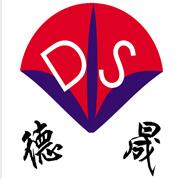- Enzyme(14)
- Carbomer(2)
- Blood collection tube additives(12)
- trinder's reagent(9)
- Biological buffer(21)
- Chemiluminescence reagent(9)
| Hubei xindesheng Material Technology Co., Ltd | |
|---|---|
| Country: | China |
| Tel: | +8618971041571 |
| E-mail: | zjing9632@gmail.com |
| QQ: | 2198447049 |
| Skype: | Chat Now! |
Desheng takes you an article to understand MES (4-morpholineethanesulfonic acid)
Release time: 2021-06-08
MES, also known as 4-morpholineethanesulfonic acid, is a zwitterionic buffer, mainly used as a running buffer for distinguishing very small proteins on bis-tris gels. MES is often referred to as one of the original Good's buffers. The pKa value of the MES solution is close to the physiological pH value, will not be absorbed by the cell membrane, and is basically transparent to UV light. MES solution is also used in cation exchange chromatography and as a biological buffer in plant cell culture. The MES solution can be prepared to the desired pH by titrating the free acid with sodium hydroxide.
MES buffer characteristics
MES is a buffer, like HEPES, MES is a zwitterionic Good's buffer. This buffer is used in solutions containing metal ions because it does not form complexes with most metals. MES is usually used in buffered media for yeast, bacteria and mammalian cells, but it is toxic to plants at a concentration higher than 10 mM. MES is also a good buffer choice in various chromatography and electrophoresis experiments because it shows lower ion mobility and conductivity. It is an effective buffer in the pH range of 5.5 to 6.7.
MES configuration steps:
To prepare 1 liter of 0.5M MES free acid buffer solution, please suspend 97.62 g of MES free acid in 750 mL dH 2 O. Use 10N sodium hydroxide to adjust to the desired pH. You can use a form to use the 0.5M MES PDF protocol. Fill with dH2O to a final volume of 1L, and pass through a filter or autoclave to sterilize. Store at 4?C. If you are using MES monohydrate or MES sodium salt, please use MES monohydrate plan or MES-Na plan.
Concentration of MES
Question: If you want to use MES buffer to prepare different pH media to bind proteins to nanoparticles, is the concentration of MES important? Answer: After making the buffer, you can dilute it with water to any desired MES concentration. Within the limit, the pH value will not change significantly. Even if the MES concentration is one-tenth, a 10-fold dilution should make the pH of the buffer actually the same as the original solution. You can easily perform this test against any particular buffer in use before use, especially if the buffer is very sparse.
Desheng is the manufacturer and supplier of MES (4-morpholineethanesulfonic acid), (CAS 4432-31-9), pH range: 5.5-6.7. As a professional manufacturer of biological buffer solutions, Desheng produces high-quality TRIS and provides special testing services. In addition, we also provide a variety of packaging options.

